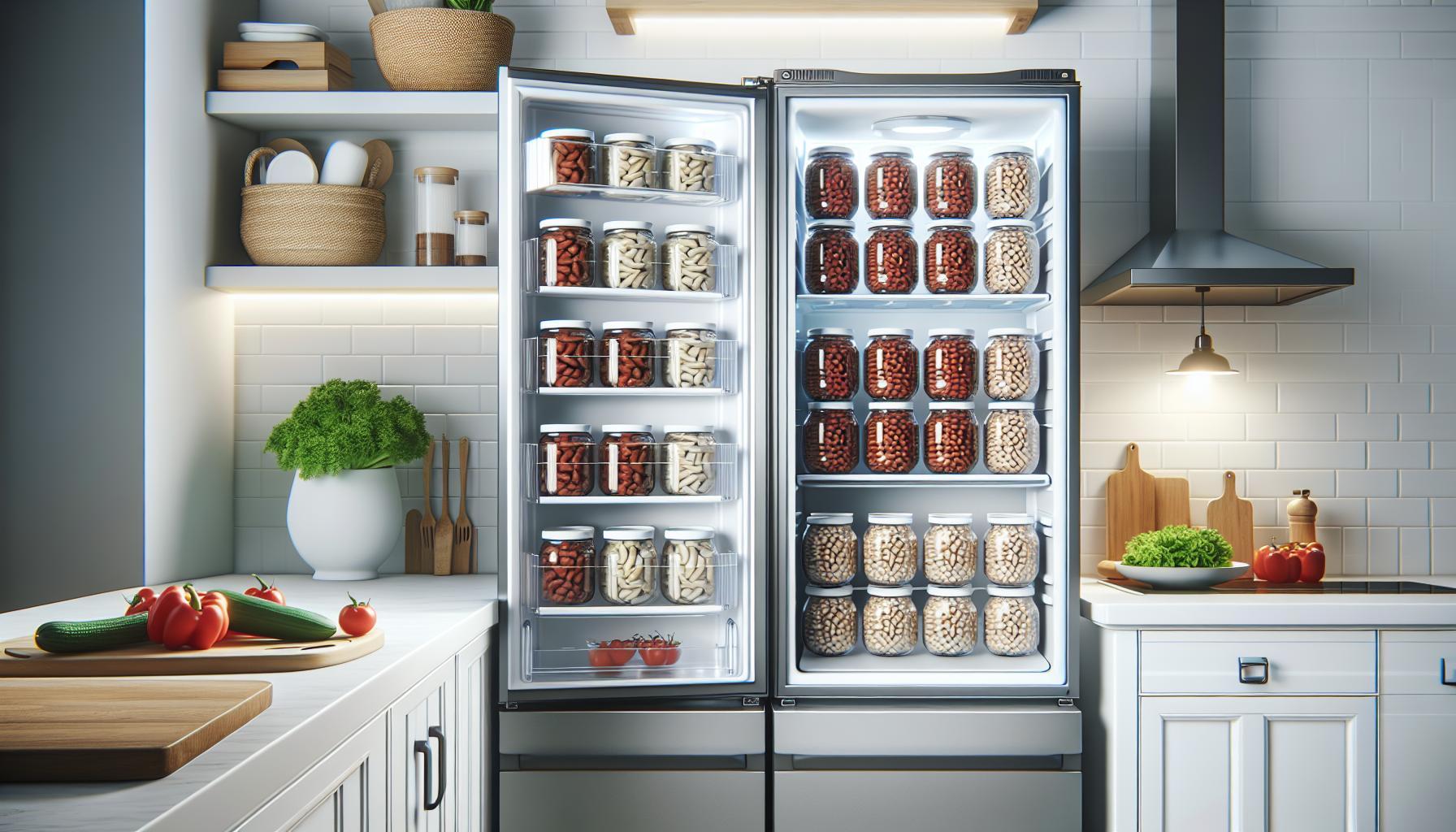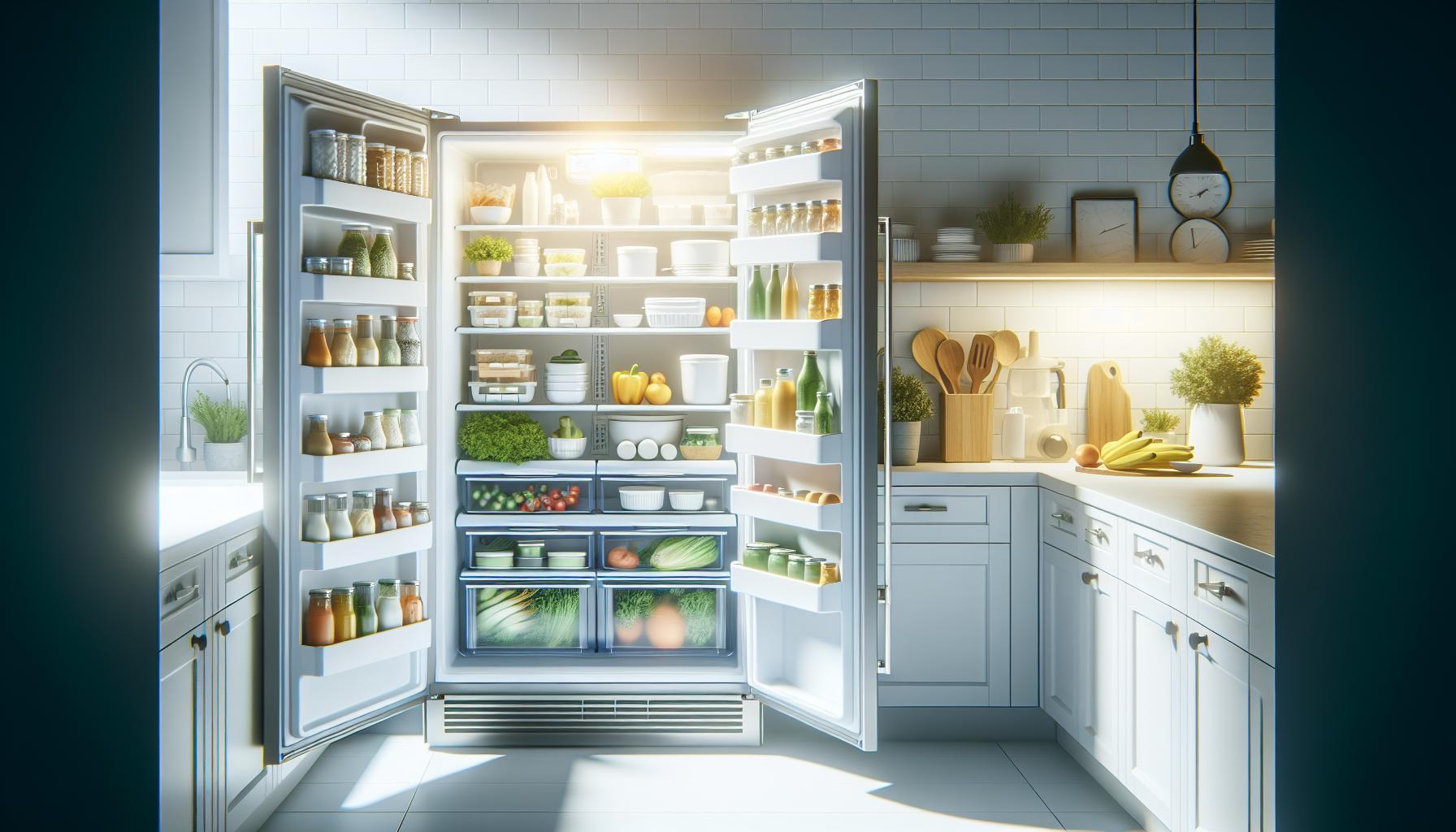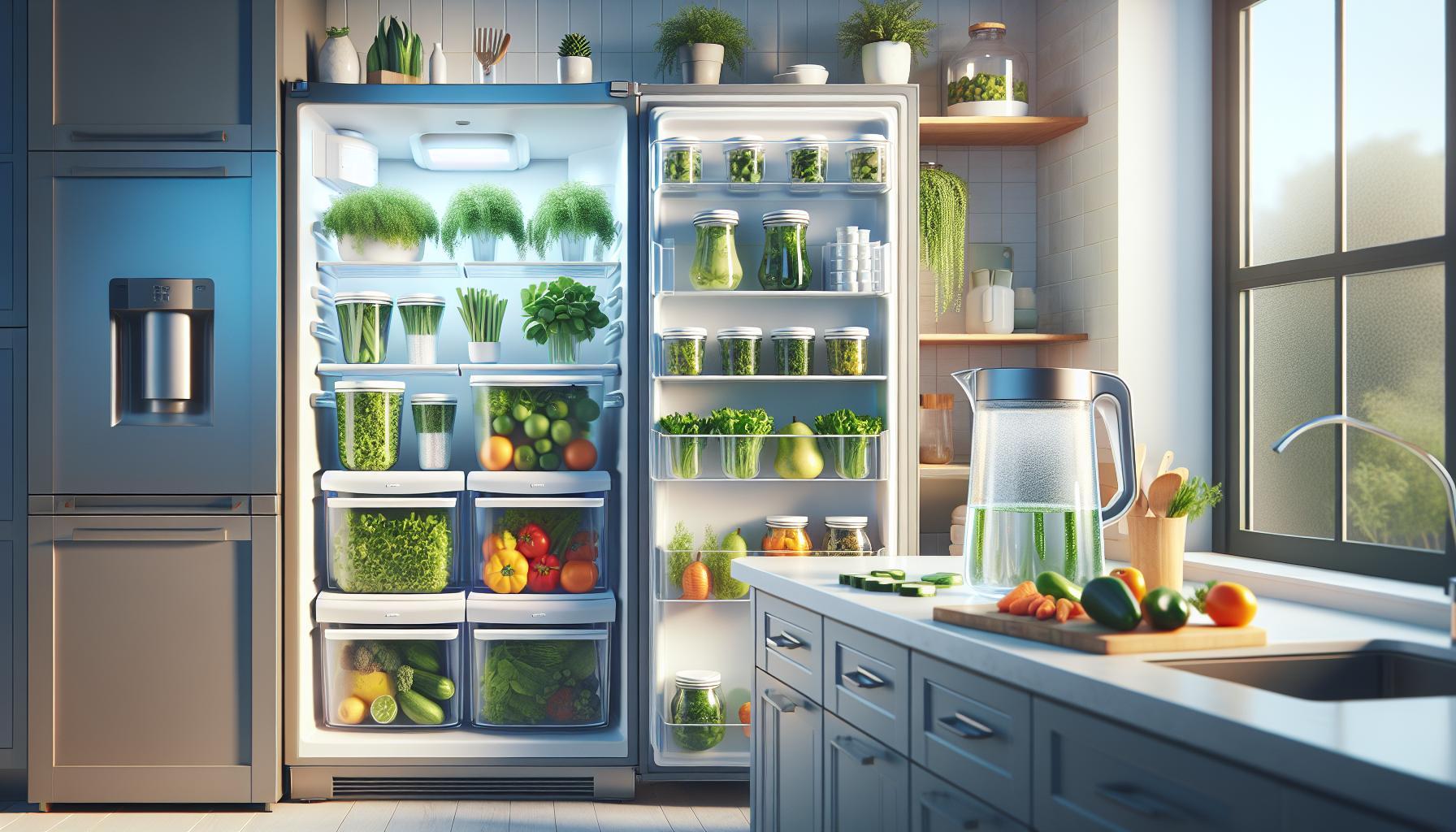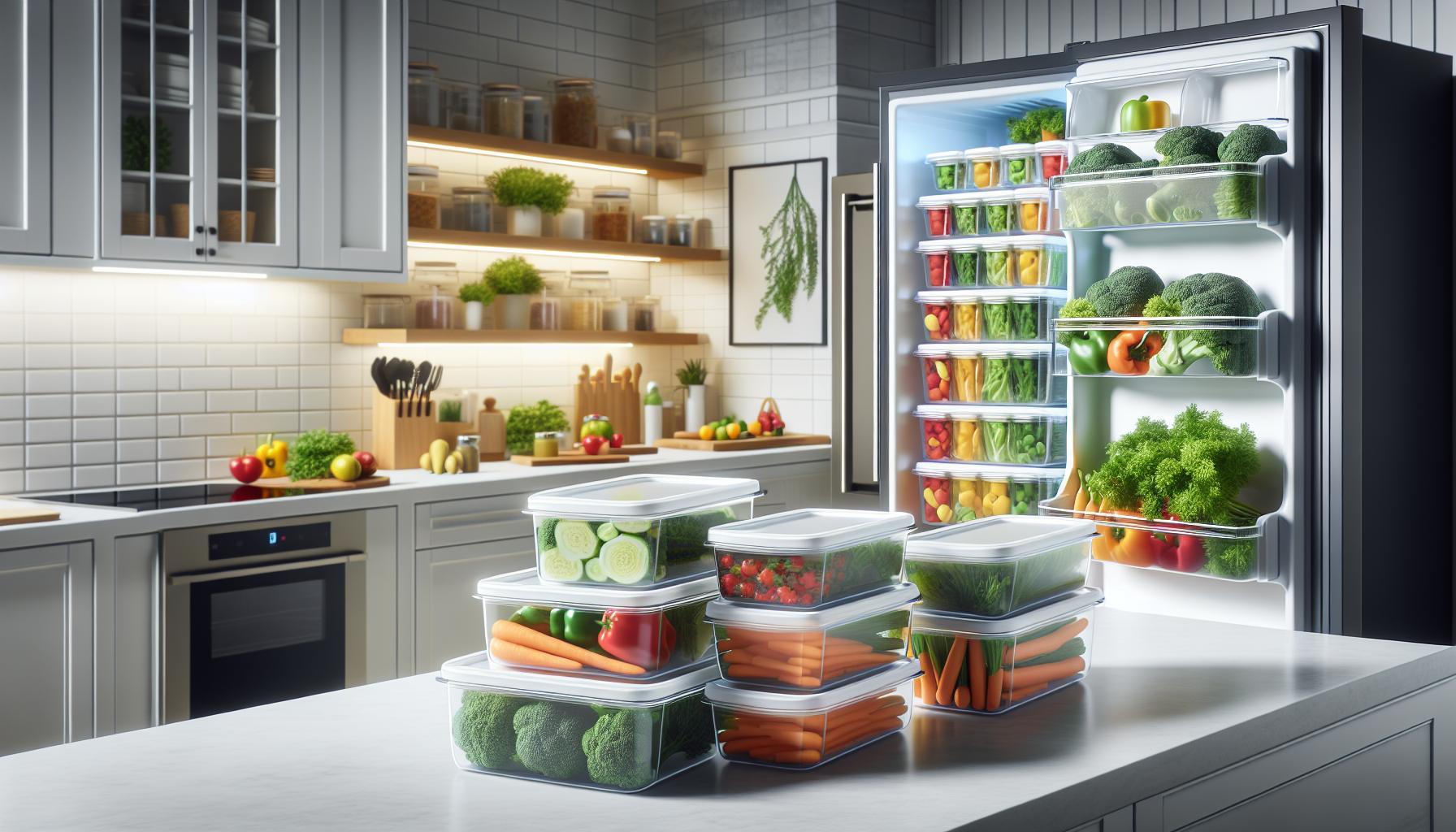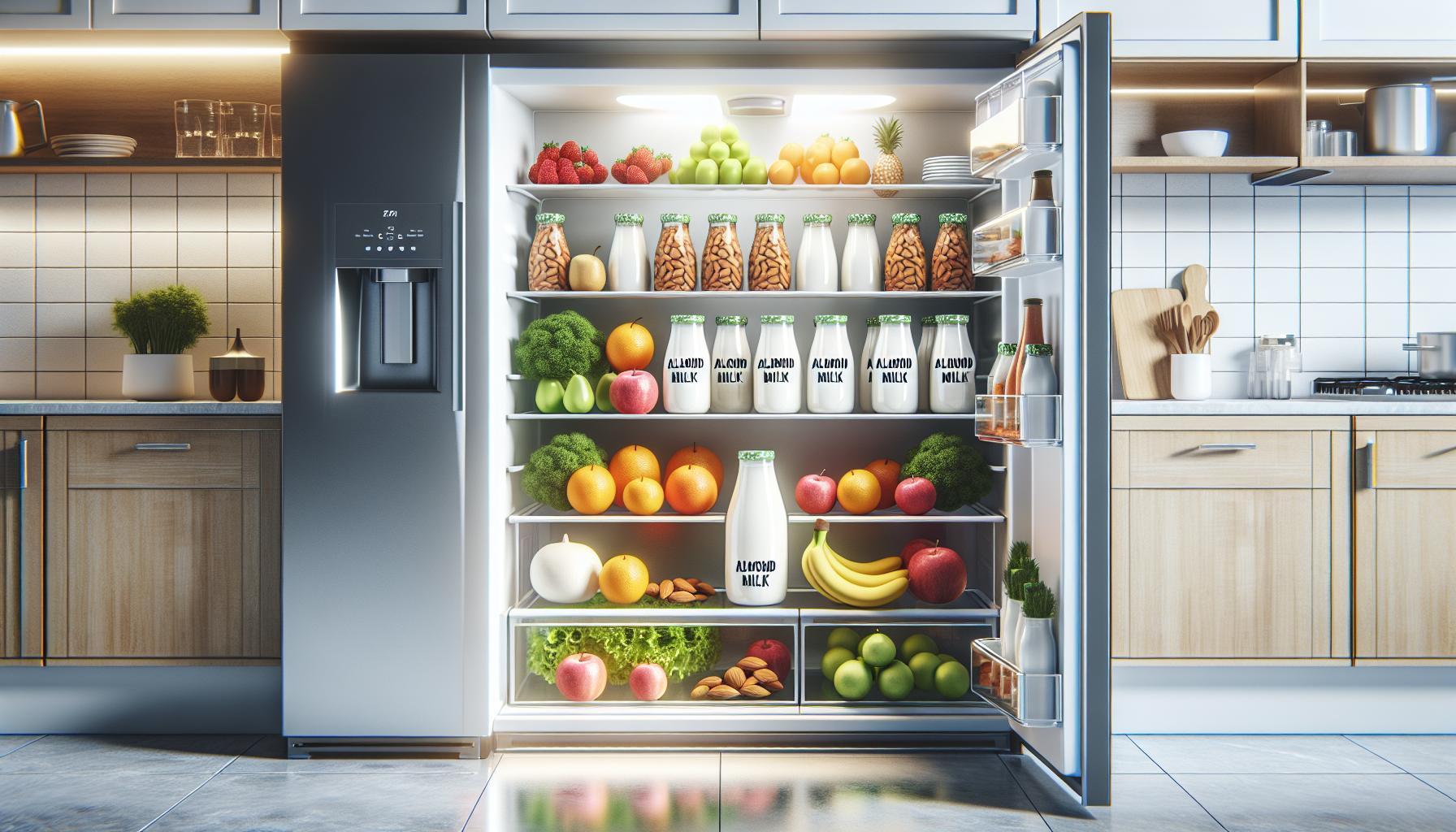Did you know that canned beans are not just a pantry staple but also a nutritional powerhouse? They offer convenience, longevity, and a hearty dose of protein and fiber. However, once opened, many people wonder how long they can safely keep them in the fridge. Understanding proper storage practices for canned beans is crucial for maximizing their freshness and ensuring food safety.
As you plan meals or whip up quick dishes, it’s essential to know how long those opened cans can last before risking spoilage. With the right storage secrets, you can enjoy your beans longer, reducing food waste and saving money. Let’s dive into the specifics of when it’s time to toss those leftovers and how to make your canned beans last as long as possible while maintaining their quality.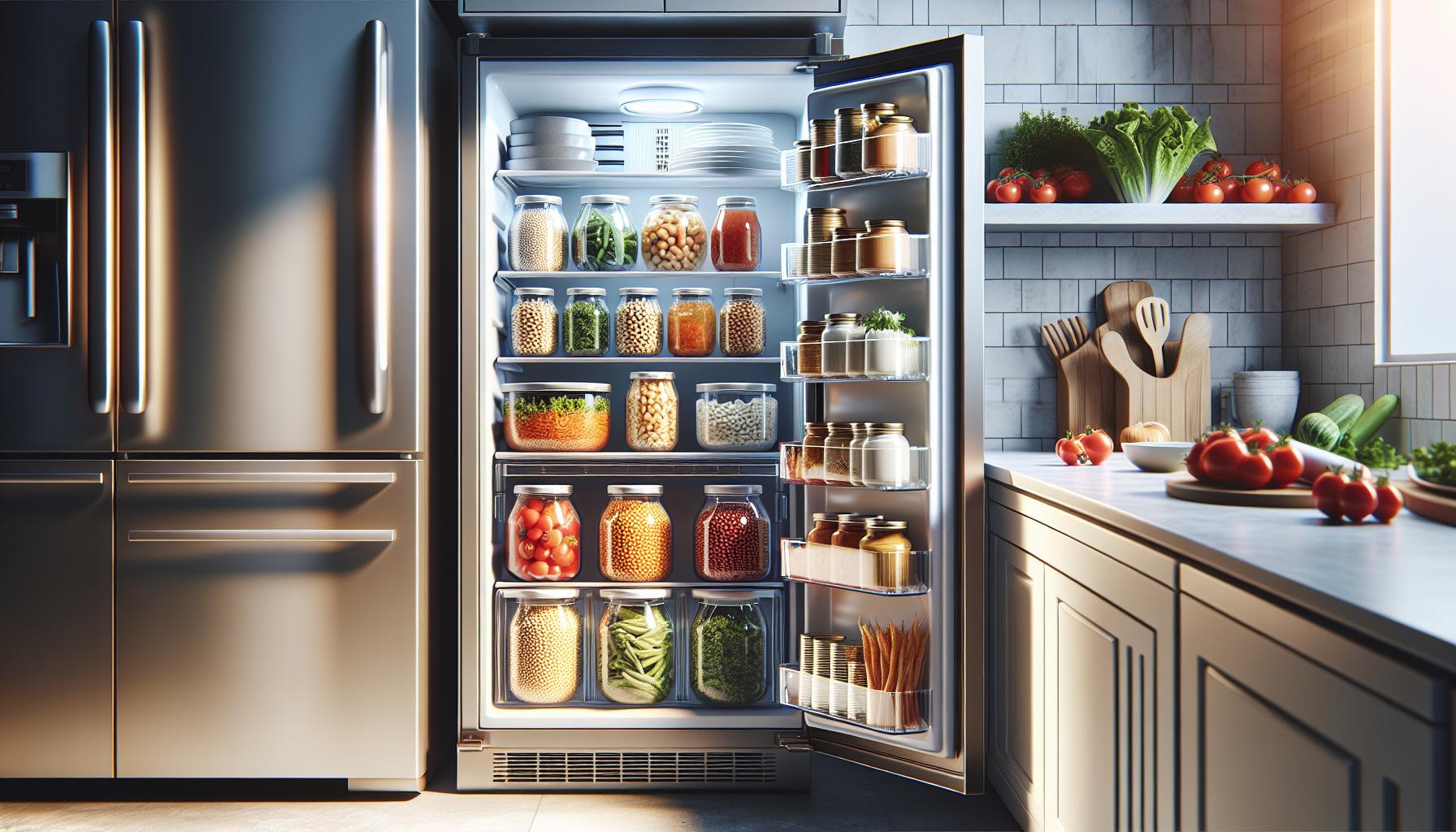
How Long Do Canned Beans Last in the Fridge?
It’s a common misconception that once you open a can of beans, they can last indefinitely. In reality, canned beans, once opened, should be treated with care to ensure food safety and quality. After being transferred from their can, cooked canned beans can typically last about 3 to 4 days in the refrigerator when stored properly. To maintain their freshness, it is essential to place them in an airtight container, as exposure to air can lead to spoilage much quicker.
For optimal storage, you should place the beans in a clean, dry container and keep them at a consistent refrigerator temperature of 40°F (4°C) or below. If you find that you cannot consume the beans within this timeframe, consider freezing them instead. Frozen, cooked beans can last up to 6 months in the freezer without losing their quality-though for best taste and texture, aim to use them within 3 months.
It’s also vital to be mindful of the signs of spoilage. If your beans develop an off smell, significant discoloration, or any mold, it’s best to discard them. By adhering to these guidelines, you can enjoy your canned beans safely and deliciously for days after opening.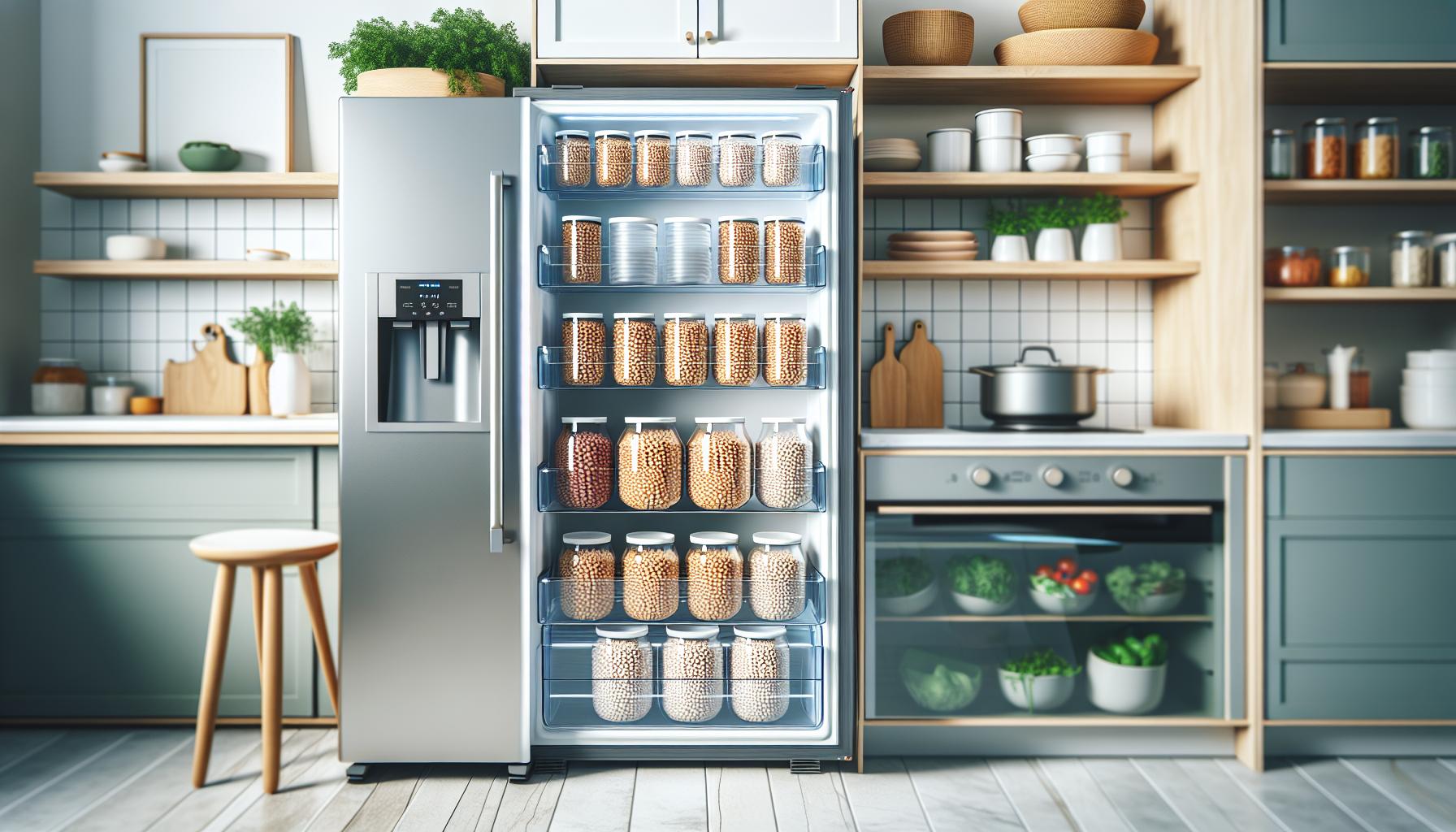
Factors Affecting Canned Beans’ Shelf Life
The longevity of canned beans in your kitchen can be surprisingly influenced by various factors that affect their shelf life. When considering how long opened canned beans last in the fridge, it’s essential to think about the conditions in which they are stored and how they are handled after opening.
Temperature and Storage Conditions
One of the most significant factors impacting the shelf life of canned beans is the temperature at which they are stored. Once opened, beans should be immediately transferred to an airtight container and placed in the refrigerator. Keeping your refrigerator at a constant temperature of 40°F (4°C) or below is crucial to inhibit bacterial growth, which can rapidly spoil food. Fluctuations in temperature can cause condensation in the container, fostering an environment that promotes spoilage.
Exposure to Air
Exposure to air accelerates the deterioration of canned beans. When beans are left in an open can or poorly sealed container, they can become dry and lose their flavor, and moisture can lead to mold growth. Transferring them to a clean, dry container is a simple step that can significantly extend their usability.
Type of Bean and Added Ingredients
Different types of beans and the presence of added ingredients can also influence how long they last after opening. For example, beans in sauces or those that are salted may have a shorter fridge life than plain beans, with the added preservatives possibly extending their longevity a bit. Always check any added sauces or preservatives’ expiration dates or use-by recommendations, as these can vary widely depending on the brand and type of product.
Signs of Spoilage
Being able to recognize spoilage signs is vital, as it ensures you discard beans before they pose any health risks. If you notice an off smell, discoloration, or any visible signs of mold, it’s best to err on the side of caution and throw them out. By understanding these factors, you can make informed decisions about the storage and consumption of canned beans, keeping your meals both delicious and safe.
Best Storage Practices for Canned Beans
Storing canned beans properly can significantly extend their freshness and usability, making it essential to follow some straightforward practices. Once you’ve opened a can, the first step is to transfer the remaining beans into an airtight container. This simple action protects them from exposure to air, which can lead to drying out and spoilage. Use glass or BPA-free plastic containers with tight-fitting lids for the best results.
Optimal Refrigeration
After sealing the beans in an airtight container, locate the coldest part of your refrigerator. Set your refrigerator temperature to 40°F (4°C) or below for ideal storage conditions. Keeping the beans in the refrigerator helps slow bacterial growth, allowing them to last longer-typically 3 to 5 days after opening. It’s wise to label the container with the date you opened it, so you can easily track freshness.
Avoiding Contamination
When handling canned beans, always use clean utensils to scoop them out of the container. Avoid double-dipping or using hands, as this can introduce bacteria. If you notice any off-odors or unusual colors, it’s best to discard the beans to avoid any health risks.
Freezing for Longevity
For longer-term storage, consider freezing any leftover beans. Place beans in a freezer-safe container or a resealable freezer bag. When properly frozen, canned beans can last for up to six months without significant loss of quality. Make sure to label the bags with the date and type of beans for easy access later.
By following these best practices, you can maximize the shelf life of your canned beans, ensuring they remain delicious and safe to eat in your favorite recipes.
Signs Your Canned Beans Have Spoiled
Canned beans are a convenient pantry staple, but understanding when they’ve spoiled is crucial to safety and quality. Even if they seem tolerable, certain signs can indicate spoilage. Be vigilant, as consuming spoiled beans can lead to foodborne illness.
To identify spoiled canned beans, first check for any noticeable changes in their appearance. If the beans exhibit mold, have an unusual color, or if the container has rusted or bulged, it’s best to err on the side of caution and discard them. Next, pay attention to the odor. Fresh beans should smell earthy and wholesome; any sour or off-odors are a clear signal that they’ve gone bad. Furthermore, if you notice any changes in texture, such as a slimy or excessively mushy consistency, it’s likely a sign that they are no longer safe to consume.
It’s also wise to conduct a taste test, but only if everything else seems normal. If you decide to sample the beans, do so with extreme awareness. A small bite followed by an immediate spit-out is recommended if any unexpected flavors are detected. Keep in mind, though, that taste tests should be a last resort, as it’s not worth the risk of food safety. Always trust your senses, and when in doubt, it’s safer to discard questionable canned beans than to compromise your health.
How to Extend the Life of Canned Beans
To maximize the shelf life of canned beans once opened, following a few straightforward storage practices can make all the difference. Canned beans can last up to 3 to 4 days in the refrigerator when stored properly after opening. However, there are several strategies to keep them fresh and enjoyable beyond this short period.
First and foremost, transfer any leftover canned beans into an airtight container. Leaving them in the can they came in can expose them to air and moisture, both of which can accelerate spoilage. Use a glass or plastic container with a snug-fitting lid to create a seal that keeps out air and contaminants. Furthermore, it’s wise to label the container with the date it was opened, ensuring that you can easily keep track of their freshness.
Keep Them Cold
Maintaining the right temperature is another crucial factor. Always store opened canned beans in the coldest part of your refrigerator, ideally at or below 40°F (4°C). Keeping them cold not only helps preserve their taste and texture but also minimizes the risk of bacterial growth. Avoid placing them in the refrigerator door, as this area is typically warmer and can fluctuate in temperature.
Consider Freezing for Extended Storage
If you find yourself with more beans than you can consume in a few days, freezing is an excellent option. While the texture may change slightly after thawing, freezing beans can extend their life significantly. Place cooled beans in freezer-safe bags or containers, ensuring to remove as much air as possible before sealing. Properly stored, frozen beans can last up to 6 months in the freezer. To use them later, simply thaw them in the refrigerator overnight or use the microwave for quick defrosting.
By implementing these strategies, you not only minimize waste but also ensure that your canned beans remain flavorful and safe for consumption, making your meal prep more efficient and enjoyable.
Reheating Tips for Canned Beans
When it comes to reheating canned beans, it’s essential to strike the right balance between convenience and food safety. Canned beans are already cooked during the canning process, which means they only need to be heated through before serving. However, following the safest reheating practices is crucial to maintain their flavor and ensure they are safe to eat.
Start by pouring the canned beans into a saucepan or microwave-safe bowl. If using the stovetop, heat them over medium heat, stirring occasionally to promote even warming. In about 5 to 10 minutes, the beans should reach a safe serving temperature of at least 165°F (74°C). Using a food thermometer can take the guesswork out of this step, ensuring they are heated sufficiently to reduce any risk of foodborne illness.
If microwaving, cover the bowl with a microwave-safe lid or wrap to retain moisture and heat evenly. Heat the beans on high for 1 to 2 minutes, stirring halfway through. Again, check that they reach the recommended temperature before serving. One advantage of the microwave is its speed, making it a great choice when you’re short on time.
For enhancing the flavor during reheating, consider adding a splash of broth or a few spices. Ingredients like garlic, onion powder, or even hot sauce can elevate the taste, turning a simple side into a flavorful dish. Additionally, you can mix in other ingredients like chopped vegetables or protein for a more rounded meal.
Lastly, it’s important to avoid reheating canned beans multiple times. Each time they are cooled and reheated, they may lose quality and pose a risk for bacterial growth. If you haven’t consumed all the beans after one reheating, it’s best to store any leftovers in an airtight container and consume them within the next few days to ensure safety and taste.
Freezing Canned Beans: Is It Safe?
Freezing canned beans is a practical solution for those looking to extend their shelf life and reduce food waste. While canned beans are pre-cooked and can last in the fridge for about three to four days after opening, freezing can significantly increase their longevity-up to six months when properly stored. This not only preserves the beans’ nutritional value but also ensures that you have a quick, nutritious ingredient on hand for future meals.
Before freezing, it’s essential to transfer the beans from the can to an airtight container or freezer bag. This step is crucial because the can’s metal may not freeze well, and leaching can occur. If you choose to freeze them in a bag, try to remove as much air as possible to prevent freezer burn. Labeling the containers with the date can help you keep track of freshness and ensure optimal usage.
When you’re ready to use the frozen beans, they can be thawed safely in several ways. The quickest method is to microwave them, but they can also be added directly to soups or stews without thawing. This versatility allows you to maintain the beans’ taste and texture while adding them to various dishes. Remember, while frozen beans may change slightly in texture due to ice crystals forming within the cells, they still remain nutritious and safe to eat.
It’s important to avoid refreezing beans once they’ve been thawed, as this can degrade their quality and texture. A good rule of thumb is to portion them into usable amounts before freezing, so you only thaw what you need for your meal. Overall, freezing canned beans is not just safe but also smart for anyone looking to enhance their meal prep and minimize waste.
Nutritional Value of Canned Beans Over Time
Packed with protein, fiber, and essential nutrients, canned beans are a convenient staple in many households. However, an important question that often arises is how the nutritional value of these beans holds up over time, especially after opening and throughout their storage period. Generally, canned beans maintain their nutritional integrity for an extended period, but a few factors can influence this, especially once the can is opened and stored in the fridge.
Once you open a can of beans, their nutritional value remains intact for about three to four days when refrigerated. However, as time passes, some degradation in texture and taste may occur, which can affect the overall eating experience. For example, the beneficial phytochemicals and vitamins, including B vitamins and certain antioxidants, can diminish slightly with prolonged exposure to air and light, even in the fridge. The best practice is to consume opened canned beans within the recommended time frame and to store them in airtight containers to limit exposure to oxygen.
Moreover, freezing canned beans can be an excellent way to preserve both their nutritional components and overall quality. While freezing them may alter their texture somewhat, it effectively halts nutrient loss. Instead of seeing a gradual decline, freezing allows you to enjoy their nutritional benefits for up to six months without significant degradation. That’s especially important if you’re mindful of meal prep and want to minimize food waste while keeping healthy options available.
In summary, while canned beans are a nutritious option that can last for some time, their optimal nutritional value is best preserved through timely consumption after opening and proper storage methods. When in doubt, always rely on your senses-if the beans smell off or have changed significantly in texture, it’s safer to discard them. By understanding how to store and manage canned beans, you can ensure you’re enjoying them at their best nutritional quality, enhancing your meals without compromising your health.
Comparing Canned Beans with Dried Beans
Canned beans present a convenient option for quick meals, but many people wonder how they stack up against their dried counterparts. Understanding the nuances between these two forms can help you make informed decisions based on your cooking needs, preferences, and pantry staples. One of the most significant differences is preparation time; canned beans are pre-cooked and ready to eat, while dried beans require soaking and cooking, which can take hours. This makes canned beans ideal for busy weeknights when you need a quick protein source without the wait.
Nutritionally, both canned and dried beans offer a wealth of benefits. However, canned beans can sometimes be higher in sodium due to the preservation and flavoring processes. Opting for low-sodium varieties or rinsing them before use can mitigate this issue. Dried beans generally have a longer shelf life-up to 2 to 3 years when stored properly-but once opened and stored in the fridge, canned beans need to be consumed within three to four days to maintain their quality. Conversely, cooked dried beans can be refrigerated for about 3 to 5 days or frozen for up to six months if you plan ahead.
Storing these beans correctly is essential to preserving their flavor and nutrition. Canned beans should be kept in a cool, dry pantry until opened. After opening, transferring them to an airtight container can prevent spoilage and keep them fresher longer. Dried beans, on the other hand, should be stored in a cool, dark place in a tightly sealed container to protect them from moisture and bugs.
In summary, whether opting for the convenience of canned beans or the cost-effectiveness and culinary versatility of dried beans, both have their advantages. The choice often depends on your cooking style and how you plan to incorporate them into your meals. With proper storage techniques and understanding of their unique characteristics, you can enjoy the nutritional benefits of beans in any form.
Creative Recipes for Leftover Canned Beans
Using leftover canned beans can open up a world of culinary creativity while helping you minimize food waste. Not only are canned beans a convenient pantry staple, but they also provide a nutritious boost to various dishes. When you have leftover canned beans that need to be consumed within a few days, consider trying the following recipes that will delight your taste buds and maximize flavor.
Bean Salad
A refreshing bean salad is a quick and nutritious option. Combine your leftover canned beans with diced bell peppers, red onion, corn, and fresh cilantro. Drizzle with olive oil and lime juice, then season with salt and pepper. This colorful salad makes an excellent side dish or a light meal on its own.
Bean and Vegetable Stir-Fry
Another delicious way to use up canned beans is by tossing them into a vegetable stir-fry. Sauté your favorite seasonal vegetables-such as broccoli, carrots, and snap peas-in a bit of oil. Add the beans toward the end of cooking to heat them through, then season with soy sauce, garlic, and ginger for a delightful umami flavor. Serve over rice or quinoa for a complete meal.
Chili
Chili is a classic dish that can be easily customized to suit your taste. Start by sautéing onions and garlic in a large pot. Mix in your leftover canned beans along with diced tomatoes, bell peppers, and your choice of spices like cumin and chili powder. Let it simmer for at least 20 minutes for the flavors to meld. This hearty dish can be topped with cheese, avocado, or sour cream for extra richness.
Wraps or Tacos
Transform your leftover beans into a filling for wraps or tacos. Spread some hummus or guacamole on a tortilla, then add the beans, fresh veggies, and your favorite toppings like salsa or shredded cheese. Roll it up for a quick lunch or dinner. This versatile idea is great for using whatever ingredients you have on hand.
Incorporating leftover canned beans into your meals not only extends their shelf life but also adds protein and fiber, making your dishes more satisfying and nutritious. Always remember to store any unused beans in an airtight container in the fridge and consume them within three to four days for optimal freshness.
Common Myths About Canned Food Storage
Canned beans are a convenient and nutritious option, yet many still harbor myths about their storage and longevity. One pervasive belief is that canned goods remain safe indefinitely once opened. In truth, opened canned beans should be refrigerated in an airtight container and consumed within 3 to 4 days for optimal freshness. Keeping them exposed to air can lead to spoilage, so proper sealing is essential to maintaining their quality.
Another common myth revolves around the idea that all canned foods must be discarded once the expiration date passes. In reality, while the “best by” or “use by” dates indicate peak quality, many canned goods, including beans, can still be safe and edible for some time after this date, provided they have been stored correctly and the can is undamaged. Regularly inspect your canned beans for any signs of bulging, rust, or leakage. If there are such indicators, it’s safer to err on the side of caution and dispose of them.
Moreover, some people mistakenly believe that heating canned beans directly in the can is a safe practice. However, this can be dangerous; cans are not designed to be heated and may release harmful chemicals when exposed to high temperatures. Instead, always transfer canned beans to a microwave-safe dish or a pot before reheating.
Understanding these myths is crucial in making informed decisions about food safety. With the right knowledge, you can enjoy your canned beans while minimizing waste and ensuring they remain safe to eat. Always remember to store them properly, respect expiration dates, and use safe reheating methods to take full advantage of their convenience and nutrition.
Understanding Expiration Dates on Canned Beans
It’s easy to overlook those expiration dates while stocking up on canned beans, but understanding what they truly signify can significantly enhance food safety and reduce waste. Canned beans, like many canned goods, often come with a “best by” or “use by” date that provides a guideline for peak quality rather than a strict safety deadline. This means that as long as the can remains sealed and undamaged, the beans may still be perfectly safe to consume even after this date has passed.
What Do Expiration Dates Mean?
Canned goods are designed to last for years due to their airtight containers, which prevent the growth of bacteria and spoilage microorganisms. However, the quality of the beans, including flavor and texture, may begin to deteriorate slowly after the indicated date. Typically, canned beans can maintain their best quality for 2-5 years beyond the date printed on the label, depending on the type of bean and storage conditions.
Factors to Consider
When assessing whether to keep or discard canned beans past the expiration date, consider the following factors:
- Storage Conditions: Canned beans stored in a cool, dark place will remain safe and maintain quality longer than those kept in a warm or humid environment.
- Can Integrity: Always inspect cans for signs of damage such as rust, dents, or bulging. If the can is compromised, it’s best to discard the contents regardless of the date.
- Smell and Appearance: If you decide to use beans beyond the expiration date, be sure to check for any off smells or unusual appearance once opened.
Understanding these aspects of expiration dates can help you make informed decisions about your canned goods. While the dates provide valuable guidance for quality, they need not instill panic. By exercising good judgment, you can minimize waste and ensure you enjoy your canned beans at their best. Always remember that proper storage is key to maximizing the shelf life of your canned beans.
Frequently Asked Questions
Q: How should I store opened canned beans in the fridge?
A: Opened canned beans should be stored in an airtight container in the fridge. This helps prevent spoilage and keeps them fresh for longer. Always refrigerate them promptly after opening, ideally within two hours.
Q: Can I eat canned beans after the expiration date?
A: Yes, canned beans can often be safe to eat after the expiration date, as long as the can is intact and stored properly. However, the taste and texture may deteriorate over time. Always inspect for signs of spoilage before consuming.
Q: How long do canned beans last unopened in the pantry?
A: Unopened canned beans can last for 2 to 5 years in the pantry when stored in a cool, dry place. Check the can for the best-by date for optimal quality, but they may still be safe to eat past that time if stored correctly.
Q: What are the signs that canned beans have gone bad?
A: Signs that canned beans have spoiled include bulging or rusted cans, a foul odor, or visible mold. If the beans appear discolored or have an unusual texture, it’s best to discard them.
Q: Can I freeze canned beans after opening?
A: Yes, you can freeze opened canned beans. To do this, drain and rinse the beans, then place them in a freezer-safe container. This method extends their life for several months, preserving their quality and safety.
Q: Is it safe to eat cold canned beans straight from the can?
A: Eating cold canned beans straight from the can is safe, as they are precooked during processing. However, many people prefer to heat them for better flavor and to enhance digestibility.
Q: What is the best way to reheat canned beans?
A: The best way to reheat canned beans is on the stovetop over medium heat, adding a splash of water or broth to prevent sticking. Stir occasionally until heated through. You can also use a microwave, covering the beans to retain moisture.
Q: Can I mix different types of canned beans in recipes?
A: Yes, you can mix different types of canned beans in recipes. Combining them adds varied flavors and textures, enhancing the overall nutrition and taste of your dishes. Just ensure to rinse them well before using to reduce sodium content.
The Conclusion
Now that you know how long canned beans last in the fridge and how to store them properly, don’t let your food go to waste! Be sure to check out our articles on “The Best Ways to Use Leftover Canned Beans” and “Understanding Expiry Dates: What You Need to Know” for more valuable tips. Remember, when it comes to food safety, always err on the side of caution-if you’re unsure about the freshness of your canned beans, it’s better to toss them. For monthly tips and recipes straight to your inbox, consider signing up for our newsletter. Share your thoughts or questions in the comments below; we love hearing from you! Stay informed and keep your pantry stocked with confidence!

